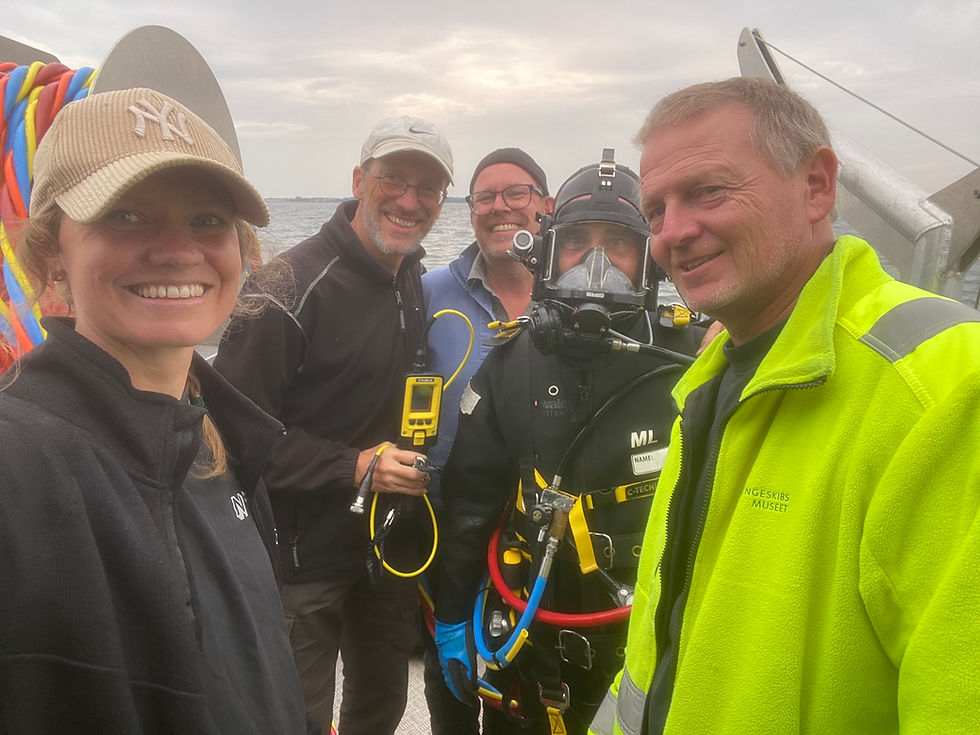Fieldwork with ENDURE: Exploring preservation and decay beneath the waves
- ENDURE

- Aug 19
- 2 min read
Over the past weeks, the ENDURE team has been in the field around Zealand and Lolland/Falster in Denmark, carrying out the first larger field campaign that will form the backbone of the research for WP2. The aim has been to collect essential data on how different archaeological materials – primarily metals and wood – behave in their underwater environments, and how we can better understand, predict and ultimately manage the processes of preservation and decay.

From Stone Age Settlements to WWII Shipwrecks
One of the unique aspects of ENDURE is that our study sites span a remarkable timescale. During this fieldwork we visited among other, both a submerged Stone Age settlement and a metal shipwreck from the Second World War. These two sites illustrate the diversity of underwater cultural heritage in Danish waters: on the one hand, prehistoric traces of daily life that can tell us about early human use of the sea; on the other, a 20th-century wreck that represents wartime history and industrial materials. Both are vulnerable, but in very different ways.
Collecting Samples and Monitoring the Environment
At each location, we collected a range of samples:
- Metal fragments to study corrosion and chemical changes
- Wood samples to trace microbial degradation
- Sediment cores to analyze DNA, the environment and geochemical signals
Alongside sampling, we deployed dataloggers that will remain on site to monitor temperature, salinity, wave action and other environmental factors over time. This combined approach allows us to connect what we see in the field with ongoing monitoring, so that we can build models of decay processes in real archaeological contexts.
Linking Field and Laboratory Studies
The collected samples are now back in the laboratory, where they will undergo detailed analyses. DNA studies will help us detect traces of microbial activity. Corrosion experiments will quantify how metals from shipwrecks degrade under specific marine conditions. Together, these studies will help us identify which factors most strongly influence the preservation of different materials, and how these interact across time.
Why it Matters
Understanding the mechanisms and rates of decay is central to the ENDURE project’s vision: to create predictive models that can inform management of underwater cultural heritage. By linking field observations with laboratory experiments and computational modelling, we hope to provide heritage managers with tools that can answer vital questions: Which sites are most at risk? Where is preservation potential highest? And what strategies can ensure sustainable management of this fragile heritage for the future?
Collaboration and Outlook
This fieldwork has been carried out in close collaboration between the National Museum of Denmark and the Viking Ship Museum. The ENDURE project includes national and international partners and includes studies that spans across the North and Baltic Sea.

















Comments